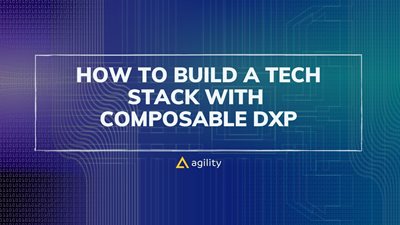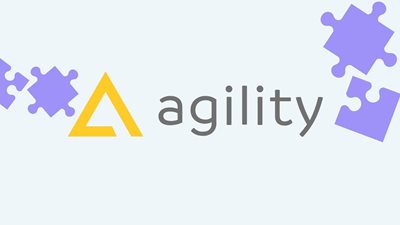What are the benefits of microservices?
What are the benefits of microservices?


Microservice architecture is a DevOps method of arranging applications within a collection of services. With microservices, the management of applications becomes more effective as services can be organized based on their capabilities, different programming languages, or even protocol. This method of handling services is different from using a monolithic built as it provides more versatility and agility.
The Benefits of Microservices Architecture

To understand the benefits of microservices architecture one will need to grasp the reasons why developing applications as singular monolithic structures can be problematic in the long run. Monolithic development means that every aspect of the system created is interconnected and at times even interdependent. As a result, every change you are looking to make in the system could result in other parts malfunctioning. Updating what is already there also becomes harder as one is tasked with examining all the potential effects of these changes.
With service-oriented architecture, the different services in your application are all in communication as they exist within a system. However, this communication does not mean that the same level of interdependence or interconnectivity is present. Hence updating one part of the features or integrating newer technologies becomes more possible.
While service-oriented architecture provided the beginning of a new style of development, it was with microservices architecture that cohesiveness was established. This is because of the large extent of benefits that have allowed the companies using this technology to truly develop their products and continue improving on them over time.
Benefit 1: Productivity
The first key benefit of using microservices architecture relates to productivity. The fact that each system is now fragmented and categorized means that its maintenance becomes much harder. Since there is less interconnectivity locating problems and troubleshooting becomes a faster process. Furthermore, deploying new technologies is enabled as different systems can have different environments, technologies, and even programming languages.
This directly relates to productivity as those tasked with handling these systems can devote more of their time towards improving the services rather than maintaining them. Each system can also be left to a different development team. This means that instead of having one single team be responsible for the entire application, smaller teams can focus their expertise and attention on each different system.
Benefit 2: Resilience
Microservices architecture is not only easier to maintain because of the separation in systems, but it is also more resilient because of them. The fact is that by separating all of the different aspects of the system into sections, the interconnectivity that would often cause problems is solved. Instead, everything is now carefully categorized and can keep operating even if a certain feature or segment develops an issue. This is why these systems are considered more resilient. Because in reality, they can limit the damage caused by a single error.
This greater resilience also allows for faster troubleshooting which subsequently means that systems will be back up and running quicker. Depending on the type of error exhibited, developers can update and change modules as needed to restore full functionality to the entire application. In industries where systems down meaning a loss in revenue, this extra failsafe can be one of the better reasons to switch to microservices architecture.
Benefit 3: Scalability
While the benefits examined so far cover the benefits of using microservices architecture in the short run there are also long-term benefits that should be considered by developers. The most important one of these has to do with scalability. This is one of the reasons that most big tech companies choose microservices. Inherently monolithic development means that every time you are looking to make a change or expand the systems that are already in place you will do so by rewriting and redeveloping the entire system so that it can fit the bigger scale. This is tougher to do and requires more developers to come on board.
In contrast, microservices allow you to complete work on each system and module separately. As such you can always make the necessary adjustments to scale up the necessary segments. Apart from that as each module can use its technologies and programming language, everything will be a lot more optimized allowing thus for even greater and easier access to tools and updates that will allow scalability. Modules and services can be scaled individually, meaning that not every single aspect of a business will need to be expanded at once. Instead, the focus can be placed on gradual expansion within a specified timeframe.
Much like services can be expanded and scaled up in sections, integration can also be completed in part. This is where the agility of these systems is truly showcased, you will be able to deploy new services and technologies as needed with minimal impact on other active services. If your company receives feedback from outside users then with a microservices architecture methodology you can also take the time to address those individually where necessary. This could prove beneficial for branding as it will make it easier for you to keep up with trends and address problems based on the feedback received. This is a more efficient and productive way of having developer teamwork, which is why it has become the preferred method of development by many big tech companies.
Microservices architecture vs. Monolithic architecture

Both monolithic and microservices architecture have their benefits. Usually, different industries may have different requirements based on which one or the other may appear to be more efficient or a better way of building a system.
Typically, monolithic architecture is faster and easier to deploy. Not only does it require extensive training, but monolithic architecture requires the entire system to be upgraded at once. This could prove to be a problem as it requires a lot more work from the development team.
For systems where scalability is more important, and having simple system distribution is key, then monolithic architecture could be the best way of approaching the development of systems. In systems where scalability, easy management, and effective and easy integration of new technologies are important microservice architecture is the way forward.
Enterprise Microservices Architecture with Agility CMS

A CMS, or Content Management System, is an essential part of being able to handle all of your tools and systems. Notably, a CMS is a key to managing all features in your built-in pages. It can also be used to create effective sitemaps, organize all of your pages and use reusable blocks. Before CMS, all of these things would require a developer both for their creation and their maintenance, but with Agility CMS, they can be managed by marketers and other professionals.
What helps separate Agility CMS from other CMS vendors is the built-in workflows within it. If you are managing a large amount of content then with this CMS you can better organize it ahead of time. The content-first approach allows you to reorder, repurpose and schedule content to be shared across all of our platforms. Even sharing previous of your content with third parties is possible and only a few clicks away.
The reality is that managing multiple digital channels can be stressful which is why having everything categorized and organized in smaller efficient groupings can help optimize your process. One of the things that makes agility unique is the fact that it uses concepts similar to the ones found in a microservice architecture. As a Headless Content Management System, it has taken what it can do even further by allowing users the freedom of choice to run their content in the way that is most efficient for them. From choosing a framework to choosing a programming language, with Agility CMS you can deliver your content using several different front-end coding languages. To do so you can use open-source SDKs and Jamstack technologies.
Taking your ideas from theory to reality will also be easier because of the high levels of integration with other tools in the industry. Apart from the external tools, one can also choose to use all of the built-in features. The interface of Agility CMS is extremely easy to use and all new products, features, and experiences will be placed in easy-to-view areas. When time is money, all of the intuitiveness of the system as well as the easy positioning of all features allows for faster utilization of the necessary tools to manage and create the necessary content.
Agility CMS also has a cloud-native, API-first platform hosted on Microsoft Azure. In the tech world, scalability is incredibly important which is why the use of the cloud is so integral as host solutions can provide faster more secure solutions and better experiences for those using them. Cloud also means that at any given moment businesses can scale up and down as needed, without having to worry about losses or investing in expensive hardware.
The high levels of integration provided by Agility CMS provide future-proof microservice architecture systems. Everything is organized and compartmentalized which allows for greater levels of agility and the ability to manage, upgrade and scale systems up as necessary.
Microservice Tool: CRM
1. Hubspot
With this microservice integration, you can collect data from fillable forms on your Agility CMS-powered website to learn more and connect with your customers via Hubspot.
2. Salesforce
Use Salesforce to track your leads and customers that come through your website and apps with Agility CMS.
Top Microservice Orchestration Tools:
Microservice Tool: DAM/ Data Management
1. Cloudinary
Developers and marketers can use Cloudinary with Agility CMS to quickly and easily create, manage and deliver images and videos to enhance their digital experiences across any browser, device, and bandwidth.
Microservice Tool: SEO
1. Ahrefs
Using Ahrefs with your Agility CMS-powered website enables you to optimize your site's SEO, analyze your competitors, understand what your customers are searching for, learn about your industry's top-performing content trends, and track your ranking progress.
2. Google Analytics
Using Google Analytics with your Agility CMS-powered website allows you to analyze your website traffic and optionally display stats within the CMS.
Microservice Tool: Ecommerce
1. Shopify
Shopify is a full-service commerce platform that provides the tools needed to run a successful e-commerce business. Now, you can seamlessly connect products from your Shopify backend straight into your Agility CMS-powered website.
2. Big Commerce
BigCommerce is a versatile solution for innovative e-commerce. Manage inventory in BigCommerce and start selling your products on your Agility CMS-powered website.
Microservice Tool: Personalization
1. Google Optimize
Integrating your Agility CMS website with Google Optimize enables you to create personalized experiences and run website tests for free.
Microservice Tool: Forms
1. Formstack
Formstack Forms combines powerful features with an easy-to-use online form builder—empowering anyone on your team to build custom online forms and begin collecting data in minutes.
Ditching Monolithic Applications for Microservice Software Development
Microservices architecture as a methodology allows for better-developed systems that can withstand the test of time. As technologies changes and more innovations appear, monolithic systems are unable to scale up or integrate all of the new changes as necessary. In contrast, microservices allow for changes to gradually be integrated into each section of the system as necessary. As a result, the systems can always be kept up to date. Scalability can also be done in sections allowing for more control of your systems and practices.
With the use of Agility CMS, your systems and built-in pages can be better managed and organized as necessary. This compartmentalization will lead to more productivity and the ability to complete tasks faster and more efficiently.

About the Author
Joel is CTO at Agility. His first job, though, is as a father to 2 amazing humans.
Joining Agility in 2005, he has over 20 years of experience in software development and product management. He embraced cloud technology as a groundbreaking concept over a decade ago, and he continues to help customers adopt new technology with hybrid frameworks and the Jamstack. He holds a degree from The University of Guelph in English and Computer Science. He's led Agility CMS to many awards and accolades during his tenure such as being named the Best Cloud CMS by CMS Critic, as a leader on G2.com for Headless CMS, and a leader in Customer Experience on Gartner Peer Insights.
As CTO, Joel oversees the Product team, as well as working closely with the Growth and Customer Success teams. When he's not kicking butt with Agility, Joel coaches high-school football and directs musical theatre. Learn more about Joel HERE.




